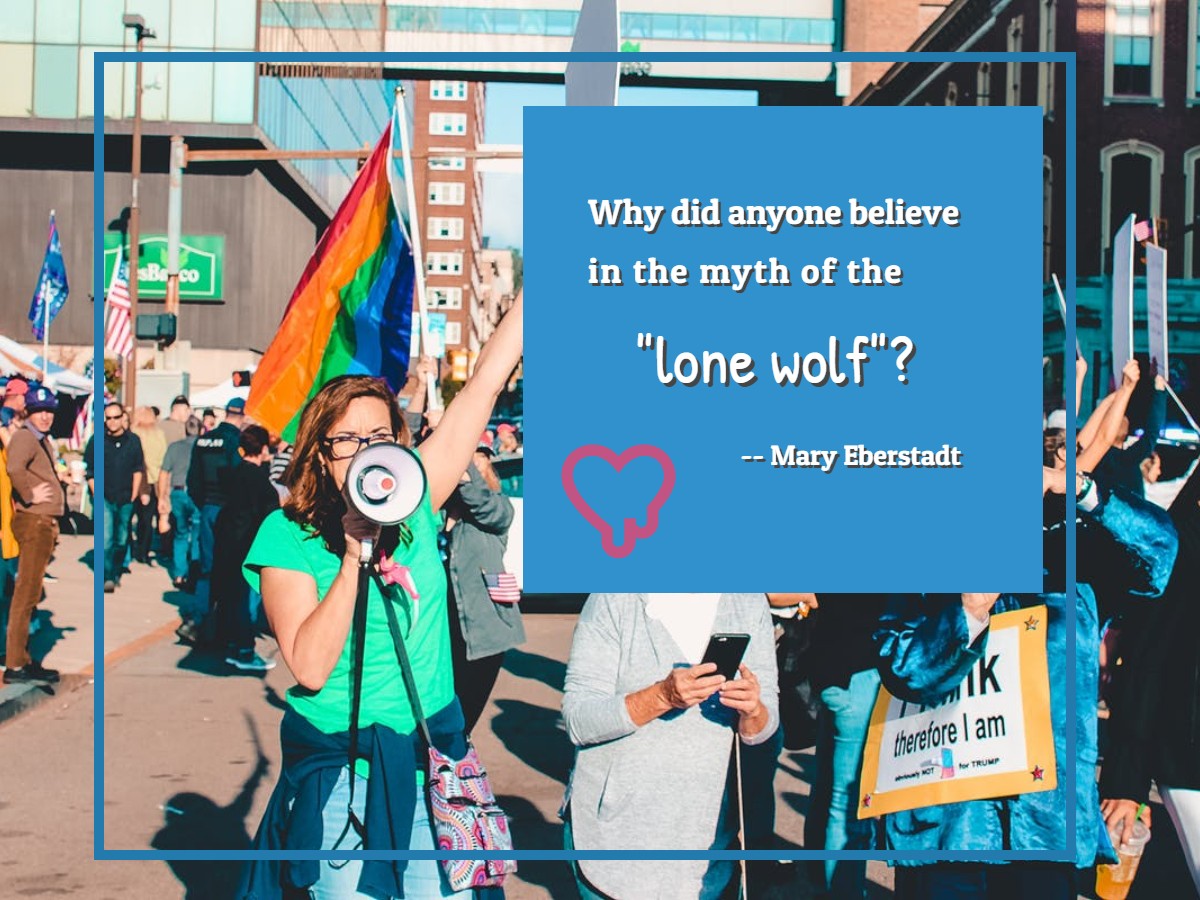I used to read Mormon blogs addictively, in spite of disagreeing with much of what their writers had to say. Many take issue with the Church’s “Proclamation on the Family.” I believe they miss the mark and speak my mind here. We’ve enjoyed ourselves a sexual revolution because technology sweeps the short-term consequences away. I wouldn’t bet, though, on escaping the long-term consequences, even if I can’t quite articulate what they might be.
That’s why we have Mary Eberstadt, who looks over this world seized up with “loss, fury and rancor” and draws the lines between cause and effect in her book Primal Screams: How the Sexual Revolution Created Identity Politics.
You cannot have missed the distress played out on college campuses, which “have become proscenia for the enactment of identity panic, complete with ‘safe spaces,’ ‘trigger warnings,’ ‘appropriation’ conflicts, and other intriguing linguistic innovations.”
Also, if you’re employed, you no doubt scrub your thoughts and your speech as often as you blink your eyes because the “human resources departments of corporations now operate in part as weaponized hall monitors, patrolling their bureaucracies and employees’ social media accounts for transgressions against identitarian codes.”
After discounting a slew of possible causes for this craziness, Eberstadt makes the case that our culture is trying to tell us something. In the name of personal freedom, this is what we have done to ourselves. We are meant for relationship, for moving in a pack. We are meant to learn life skills, skills so basic we can hardly name them, from a loving family. Take away our small daily doses of cultural nourishment and some frightening behavior follows. Eberstadt even cites studies on monkeys and elephants going awry after the disruption of their herds.
She isn’t the only observer who notes that this cultural up-ending has only emboldened the already-strong and injured the already-weak. And she asks “Why should the sexual revolution . . . be immune to second thoughts?”
In a brave move, she invites three other thinkers and writers to add their comments at the end of her book. Most don’t agree with her conclusions, but she gets in the last word.
Graphic created on Snappa.com







Leave A Comment